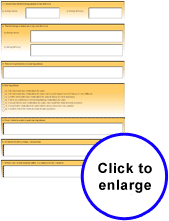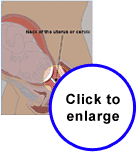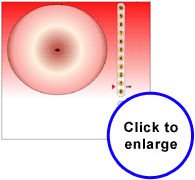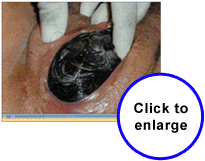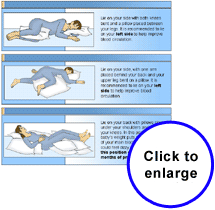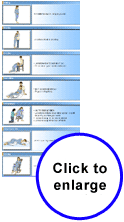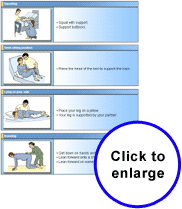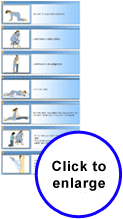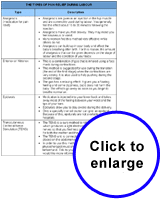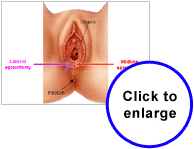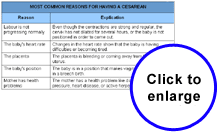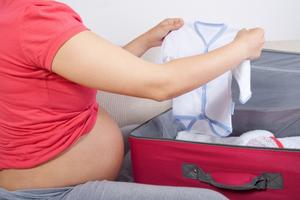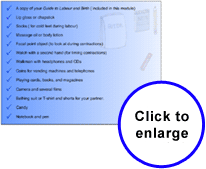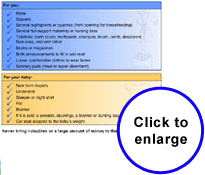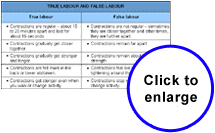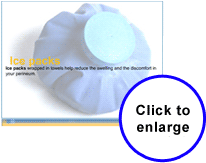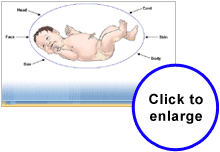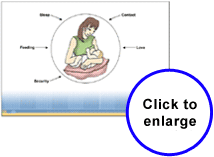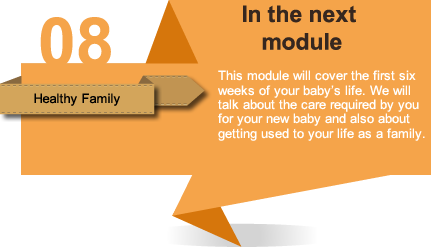Healthy Birthing
INTRODUCTION
Although childbirth is a natural event, many women feel some worry along with the excitement.

One way to deal with these feelings is to learn as much as you can about childbirth. Knowing what to expect will help you feel more confident. Inquire about childbirth and talk about your worries to the important people in your life.
PRETERM LABOUR
Preterm labour is any labour that starts before 37 completed weeks of pregnancy. Preterm labour can lead to a preterm birth. The earlier a baby is born the more likely he or she could have long-term health problems. Some preterm babies are very small and may not be strong enough to live. Any woman can go into preterm labour but those most at risk are:
- Having their first baby;
- Have had a preterm baby before;
- Smoke;
- Are underweight;
- Are not getting enough healthy food;
- Have a lot of stress in their life;
- Have a vaginal or bladder infection;
- Have had a previous abortion.
It is not always easy for a woman to tell if she is in preterm labour. You should watch for these signs:
- Bleeding from the vagina;
- Contractions of the uterus;
- A sudden gush or a constant slow leak of fluid from the vagina.
Or a change in what you normally feel with:
- Low dull back ache;
- Pelvic pressure;
- Increase in discharge from the vagina.
If you experience any of the above signs after the 20th week and before the 37th week of pregnancy DO NOT WAIT! The best thing for you and your baby is for you to GO RIGHT AWAY TO THE HOSPITAL.
A. THINKING ABOUT CHILDBIRTH
Learning about childbirth will help you to make plans for your baby's birth. Most hospitals want to meet the needs of families. You can learn about this care as well as other choices by asking questions.

If you would like to have a particular kind of care and you're not sure it is available, talk it over with your prenatal educator or your health care provider. When the time comes, it will be easier to make the right choices if you know your options.
a. A Message for Birth Partner
The birth partner is the person the mother chooses to be with her to support her during labour and delivery.
This is how the birth partner can help the mother during labour and delivery.
Anyone can be a birth partner – your partner, of course, but also a family member or a friend. You don't need any special skills. You just need to be there and to care.
Inquire from the personnel at the hospital where you plan to deliver if it is possible to have more than one birth partner. This policy varies from one hospital to another.
b. Planning for Your Baby's Birth
The first step in planning for your baby's birth is to find out what choices and options are available in your community. Talk with your health care provider and your prenatal educator. The services of a doula or midwife are available in certain areas.
You may want to write your birthing plan. The birthing plan is a document written for your health care provider and the nursing personnel at the hospital. It indicates the type of delivery you want as well as the care you wish for you and your baby.
The following example of a birthing plan will help you write yours. If certain elements don't seem important, omit them. Do not hesitate to add elements that are important to you but are not included in the example.
Although each future mother hopes for an easy delivery without complications, it may not happen the way you had planned. In some situations you may need to be flexible with your birth plan to ensure the health of you and your baby.
B. PREPARING FOR CHILDBIRTH
Labour and birth are hard work and require a lot of energy, will, and effort. There are two keys to comfort during pregnancy. The first is understanding and working with the labour process. The second is learning and practicing as many comfort measures as possible.

You never know what will feel good during labour, so it's a good idea to have different things to try.
a. The Stages of Labour and Delivery
During the nine months of your pregnancy, your baby has been growing in your uterus. The uterus is a pocket made of very strong muscles which stretch as your baby grows. The neck of the uterus, called the cervix, opens into the vagina. During your pregnancy the cervix is thick and is closed with a mucous plug.
During labour, the muscles of the uterus tighten and relax to open up the cervix and help the baby move out of the uterus. This tightening is called a contraction
Labour is divided into three stages. By learning about and practicing breathing, relaxation, and other comfort measures, you can prepare yourself for all stages of labour.
1. First Stage
2. Second Stage
3. Third Stage
The third stage, which takes about 5 to 30 minutes, involves the expulsion of the placenta. The placenta that fed your baby in the uterus comes out in the same way as the baby.
b. Relaxation
Learning to relax is one of the best ways to work with your contractions during labour. You will find the detailed instructions in Module 6 entitled "Healthy Activity".
Since you never know what will feel good during labour, it is a good idea to practice relaxing in many different positions. Here are a few examples of relaxation positions.
Remember, however, that there is one relaxation position that you should avoid. Do not lie flat on your back after your 16th week of pregnancy. This is because the weight of your uterus presses on your blood vessels and can reduce blood flow to you and your baby.
c. Positions
It is a good idea to practice all the possible positions that you might find comfortable during your labour. Practice them until they become comfortable.
Here are a few important points to remember.
The following table demonstrates a few positions to try during the first stage of labour.
The following table demonstrates a few positions to try during the second stage of labour - pushing.
d. Types of Massage
You never know what kind of massage is going to feel good. The best idea is to experiment and try out different kinds of massage. Then, when the time comes, you will have choices.
General information for the person giving the massage.
The following animations demonstrate the main massage techniques.
 to see the effleurage (light massage) technique.
to see the effleurage (light massage) technique.
e. Comfort Measures
Breathing, relaxation, finding comfortable positions, and massage will all help you feel better during labour.
Remember that labour is different for each woman. There are no good or bad techniques; only techniques that are more or less effective. Try different ones to find what works best for you.
Test Your Knowledge
|
|
The following exercise will help you learn more about the measures that provide a comfort during labour and delivery.
Click on the option button which corresponds to the correct answer and verify your answer by clicking on the "Check" button.
|
1 |
Among the following options, which is the most appropriate to help the mother relax? |
|
2 |
How can hydrotherapy be useful during labour and delivery? |
|
3 |
Among the following measures, which one is the most appropriate during labour and delivery? |
|
4 |
What could you do to replace the lost fluids, maintain your level of energy, and quench your thirst? |
|
5 |
What could you do to focus your attention during your contractions? |
|
6 |
Which among the following items could be useful during labour and delivery? |
f. Back Pain
Most women feel contractions in their lower abdomen, but about one in four women will feel them in their back. The back pain is caused by the baby's back pressing against your back. This back pain is usually felt just under your waist and lasts for most of the first stage of labour.
The following advice will help alleviate back pain during labour.
The birthing ball can be very useful if you feel contractions in your lower back. You can lean on it when you are on your hands and knees.
This is how to use the birthing ball to alleviate lower back pain.
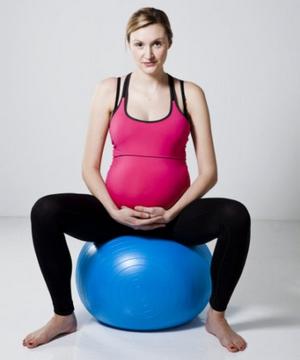 |
 |
This position encourages movement of the pelvis and the hips and uses gravity to help the baby rotate which will be less painful for you.
g. Breathing
Breathing is natural and most of the time, we don't even think about it. However, during delivery, the way you breathe can make a real difference. Learning to pace your breathing can help you relax during your labour. Your breathing can make your contractions more effective.
Choose the breathing technique that is best for you. Labour is different for each woman. Look at breathing techniques and rhythm as tools to help you during your labour.

1. Slow Deep Breathing
Your normal breathing may be slower or faster than another person. Begin by relaxing and breathing so that you are comfortable.
Most women begin with slow deep breathing and continue as long as they feel comfortable.
 for a description of the slow deep breathing technique.
for a description of the slow deep breathing technique.
 to hear the slow deep breathing technique.
to hear the slow deep breathing technique.
To practice this breathing technique, you or your partner can place a hand on your belly or your chest. You will notice that your chest rises and falls with each breath. Your partner can check that your arms and shoulders remain relaxed.
2. Faster Shallow Breathing
This is the breathing technique you can use if your contractions become more intense, and you have difficulty relaxing using the slow deep breathing technique. Faster, shallow breathing is done more quickly and higher in your chest.
 for a description of the faster, shallow breathing technique.
for a description of the faster, shallow breathing technique.
 to hear the "faster shallow breathing" technique.
to hear the "faster shallow breathing" technique.
To practice the faster, shallow breathing technique, begin by taking short rapid breaths. Each breath should be light and shallow.
Try breathing at different speeds until you find one that is comfortable for you. Practice this breathing until you can stay relaxed and comfortable for 60 to 90 seconds.
3. Pant-Blow Breathing
This breathing technique will help you to relax when your contractions are longer and stronger and you can no longer relax using the other breathing techniques. This technique is also referred to as transition breathing.
Pant-blow breathing is done through the mouth. You take several fast, shallow breaths and then you blow out
The shallow breaths make a quiet "heh" sound. Choose any rhythm that is best for you. Many women are comfortable with "heh, heh, heh, heh, and blow" (four fast pants to one complete blow). You can also try other rhythms like "heh, heh, blow" (two fast pants to one complete blow) or "heh, heh, heh, blow" (three fast pants to one complete blow). Try them all in order to choose the one that is best for you.
 for a description of the pant-blow breathing technique.
for a description of the pant-blow breathing technique.
 to hear the pant-blow breathing technique.
to hear the pant-blow breathing technique.
This type of breathing is used during the transition phase that happens towards the end of the first stage. At this point, contractions can last for about 90 seconds and can be very close together
Practice until you can stay relaxed and comfortable for 90 seconds while doing pant-blow breathing.
4. Breathing to Help You Stop Pushing
At certain moments during labour, you will feel the urge to push, but your health care provider may ask you NOT TO PUSH.
 for a description of the breathing technique to help you stop pushing.
for a description of the breathing technique to help you stop pushing.
 to hear the breathing technique to help you stop pushing.
to hear the breathing technique to help you stop pushing.
You can practice breathing to stop pushing. While you are practicing your pant-blow breathing, have your partner say "urge to push." Switch to blowing out for a few seconds until your partner says "urge passes." Then return to pant-blow breathing.
5. Breathing While Pushing
Once your cervix is fully open, your health care provider will ask you to push when you feel the urge. This may occur several times during each contraction.
When a contraction begins, take a relaxing breath - in through your nose or mouth and out through the nose or mouth.
Practice any breathing technique that is comfortable until you feel the urge to push.
When you feel the urge to push:
- Relax your pelvic floor muscles.
- Tuck in your chin and curl your trunk forward.
- Tighten lips and breathe out very slowly.
- Continue breathing until the urge to push leaves.
There are other methods of breathing while you push. Your health care provider may suggest a different one at delivery time. Use the method that works best for you.

h. Practicing for Labour
A labour rehearsal is a chance for you and your partner to put together all the new techniques you have learned.
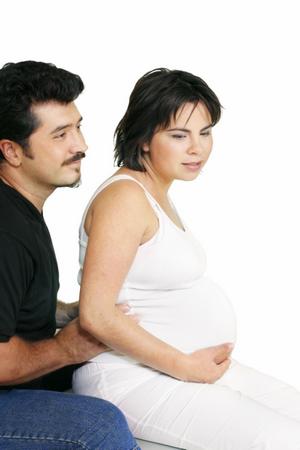
During the rehearsal, your partner talks you through imaginary contractions. Your role is to practice breathing and relaxation methods in time with these imaginary contractions. Your partner must also check to be sure that you are relaxed. If you are tense, gentle stroking or touching can help you relax.
You can also follow "Your Guide to Labour and Delivery" found further on in this module to help connect your labour rehearsal to the real thing.
C. MEDICAL HELP DURING CHILDBIRTH
Most births are normal and uncomplicated. However, no matter how well you prepare, there is no guarantee that everything will go as you planned.

Ask your health care provider questions now. If you need medical help during labour, you will be prepared to make choices that are right for you and your baby.
a. Induction
Few women have their babies exactly on their due date. Pregnancy usually lasts between 38 and 42 weeks but there are exceptions. If you do not begin your labour around this time, your health care provider will watch you carefully.
Labour is induced for specific reasons which may include:
- The mother has a medical problem such as heart disease, diabetes, or high blood pressure.
- The baby has a medical problem and must be born sooner.
- Your health care provider decides that your pregnancy has lasted longer than is safe for you or your baby.
- Your waters have broken, but labour has not started.
Labour can be induced using different methods such as: stripping the membranes , cervical ripening , artificial rupture of membranes , and induced contractions .
Discuss with your health care provider if you have additional questions about induced labour.
b. Fetal Monitoring
Fetal monitoring is a way to check on the well being of the baby during labour.
There are several different kinds of fetal monitoring. The type of monitoring you will receive will depend on the nursing staff, the hospital's equipment, and whether or not you have any complications. If the pregnancy is normal and without complications, it is possible to use a technique that will allow you to move around.
Here are the main fetal monitoring techniques that may be used during labour.
c. Pain Relief
For many women, the breathing, relaxation, and comfort positions you have practiced during your pregnancy will be all you need during labour. However, some women find that these alone are not enough, and they need other kinds of pain relief.
Having a trusted support person with them throughout labour has been shown to help women manage labour pain better.

Different types of pain relief are available depending on where you deliver your baby. Talk to your health care provider during your prenatal visits to find out what is available.
The following table presents the different types of pain relief that can be used to relieve the pain during labour.
d. Episiotomy
An episiotomy is an incision made between the vagina and the rectum (midline episiotomy) or off to one side ( lateral episiotomy) to make more room for the baby to pass through. An episiotomy is usually done right before the baby is born. A local anesthesia is used before the episiotomy is done.
After the baby and the placenta are out, the episiotomy is sewn up with dissolving stitches.
Usually doctors will do an episiotomy only when absolutely necessary, for example, during a forceps delivery or if there is difficulty pushing the baby's head out. Talk with your health care provider if you want more information.
e. Forceps and Vacuum Extraction
Certain women may need help to get the baby out quickly, for example, if the baby's heartbeat slows down or becomes irregular, or if the baby is in a position that makes birth difficult, or if you are just too tired to push anymore.
When this happens, your health care provider will give you a local anesthesia , do an episiotomy, and use the forceps or vacuum extraction.
Forceps are shaped like spoons and are placed on either side of the baby's head to gently ease the baby out.
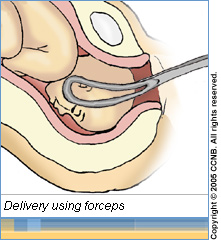
The vacuum extraction method is when a soft plastic cap is placed on the baby's head and gentle suction eases the baby out.
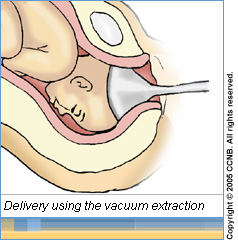
Both the forceps and the vacuum extraction leave marks on the baby's head. These marks are not serious and soon disappear.
f. Cesarean Birth
A cesarean section, which is an operation, is performed when giving birth through the vagina is not safe for the baby. Even though you may be planning for a vaginal birth, it's a good idea to learn about cesareans in case your baby needs to be born this way.
A cesarean birth may be planned ahead of time or decided upon during delivery because of unexpected difficulties.
Here are the most common reasons for having a cesarean birth:
If you do need a cesarean birth, it is important that both you and your partner are involved in the decision. Needing a cesarean birth does not mean that you have failed in any way. The overall goal is to have a healthy mother and a healthy baby. Sometimes the cesarean birth is the only way to achieve this goal.
Depending on the hospital and the reason a cesarean birth is performed, you may need an epidural anesthesia , a spinal anesthesia or general anesthesia . In certain cases, your partner may stay with you while in other cases, he will be asked to leave the operating room.
The following images will help you visualize how a cesarean birth is performed.
After a cesarean birth, the baby will get special attention from the doctors and nurses. The baby will be wrapped in a warm blanket and given to you and your partner to hold.
Most mothers find that it takes them longer to recover from a cesarean birth than from a vaginal birth. This is because after a surgery, recovery takes more time.
D. TIME TO GET READY
a. The Suitcase
Pack Your Suitcase Before You Need It
Think about packing two bags: one with things you will want during labour, another with things you will need during your hospital stay. The second bag should contain the clothes that you and your baby will wear home.
Here are a few suggestions to help you prepare what you will need during labour and delivery.
Here are a few suggestions to help you prepare what you will need for your stay at the hospital.
b. Signs of Labour
During the last few weeks of your pregnancy, your body will give you signs that your delivery is approaching. Here are a few signs that may indicate that your labour will soon begin.
It can be difficult to know whether or not what you feel is really labour. As your body prepares for labour, you may feel certain signs known as false labour. These signs are similar to true labour.
The following table can help you differentiate between true labour and false labour.
Find out in advance whether you should call your health care provider or a triage nurse when you are wondering if you are really in labour.
c. Departure
Your health care provider will give you advice about when you should go to the hospital.

Generally, you should go to the hospital if one of the following situations occur.
- If your waters have broken (rupture of the membranes)
- If you have vaginal bleeding
- If your contractions are five minutes apart and the hospital is located less than 30 minutes away.
- If your contractions are 10 minutes apart and the hospital is located more than 30 minutes away.
- If you have lasting persistent pain.
When in doubt, call the labour and delivery ward at the hospital.
How to Time a Contraction
- Use a watch with a second-hand and count the seconds out loud.
- Note the time when a contraction begins. Note the time when the contractions ends. This is the length of the contraction.
- Note the time when the next contraction begins. The time between the beginning of one contraction and the beginning of the next contraction is the frequency or how far apart the contractions are .
The following diagram will help you time a contraction.
d. Guide to Labour and Birth
This guide will give you information on the following:
- what will happen
- how you may feel
- what you can do
- what your labour partner can do to help
This guide is printable. Bring it with you to the hospital. It might help you and your partner to keep track of your labour and to stay as confident and comfortable as possible.
E. EARLY CARE OF THE MOTHER
The first few days after your baby's birth are filled with excitement adjustments, and questions. In New Brunswick, a public health nurse will visit you at the hospital or will call you at home. You may be eligible for the Early Childhood Initiatives Program.
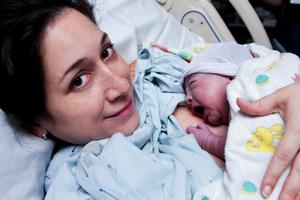
After you return home, you can continue to get information and support by contacting your Public Health Office, Telecare at 1-800-244-8353, or the hospital where you gave birth.
a. Care of the Mother
Whether you have a vaginal or cesarean birth, you will notice many changes in the hours and days following your baby's birth. Physically, your body recovers from childbirth and gradually returns to its pre-pregnant state. Emotionally, you get used to the idea of being a mother and begin to know and love your baby.
Rest and time with your baby will help to ease you through these changes.

While you are in the hospital, your temperature, pulse, and blood pressure will be checked. Your abdomen will be checked to see that your uterus is firm and returning to its normal size. If you have had an episiotomy, it will be checked to see if it is healing well.
Speak to the nurse or your health care provider if you have any questions about your body, your baby, or your new family
Test Your Knowledge
|
|
The following exercise will help you learn a little more about what you can expect after childbirth.
Click on the option button which corresponds to the correct answer and verify your answer by clicking on the "Check" button.
|
1 |
While the uterus is returning to its normal size, you may feel cramps in your abdomen. |
|
2 |
Lochia is vaginal discharge and looks much like a menstrual period. |
|
3 |
After childbirth, a woman should stay in bed as much as possible. |
|
4 |
The mature milk production begins two to four days after delivery. |
|
5 |
Breastfeeding delays the return of your period. |
b. Physical Discomforts
Let's look at the causes of physical discomfort after a vaginal delivery and discuss coping techniques.
Whether you have had an episiotomy or not your perineum (area between the vagina and the rectum) will be swollen and sore.
Here are a few tips to soothe perineum pain.
Pushing during delivery may cause hemorrhoids. If you had some during your pregnancy, the delivery may have increased the swelling and the pain.
Here are a few tips to relieve the swelling and the pain of hemorrhoids.
Hemorrhoids, which can be quite painful, should disappear on their own as your body recovers from pregnancy and delivery.
c. Care after a Cesarean Birth
After a cesarean, your care in the hospital will be a little different. If you have any questions, talk to your health care provider.
You may also find that you have feelings that you didn't expect, especially if you had planned a vaginal birth. These feelings are normal. Talk about how you feel with your partner, your health care provider or someone you trust.
1. Physical Care
After a cesarean birth, you will likely experience pain from your incision. Don't hesitate to ask if you need pain medication.
For the first 24 hours after the birth, you will have an IV to make sure you get enough fluids and a bladder catheter to help you urinate. You will be offered fluids and will slowly be encouraged to eat if you feel like it.

To make it easier to have a bowel movement after surgery, drink plenty of liquids and walk as much as possible. Your health care provider may suggest a stool softener or mild laxative. When you have a bowel movement, support your incision with your hands while you push gently.
After a cesarean, limit your activities such as lifting, hauling, and pushing for four to six weeks to allow the incision to heal.
2. Care of Your Incision
For two to six days your incision will be covered with a dressing. During your stay at the hospital the nurse will clean and change your dressing. You will be able to shower the day after delivery. You can remove the dressing while you shower. . If you are not sure that you can take a shower, ask the nurse for help.

Depending on the kind of stitches in your incision, they will either dissolve or be removed a few days after the surgery. Some doctors use metal clips or staples to close the incision. These will also need to be removed a few days after surgery.
Your incision will be sore at first and, as it heals, may feel numb, itchy, tight, or tender. This is a normal part of healing.
Your health care provider will tell you how to take care of your incision after you leave the hospital. Usually, your incision won't require any special care after you go home.

During feedings, place a pillow between your baby and the incision. You will both be more comfortable.
3. Rest
After a cesarean birth, your body must recover from both childbirth and surgery. Give yourself time to regain your strength.
Rest is an important part of recovery. Try to rest when your baby sleeps. Accept help when it is offered. Limit visitors. Try putting a sign on your door - "Mother and Baby Are Sleeping."

4. Vaginal Birth after a Cesarean
What about the next time?
If you had a cesarean birth, you may still be able to have a vaginal birth with future babies.
A vaginal birth after a cesarean is usually considered if
- your next pregnancy is uncomplicated.
- the incision runs from side to side rather than up and down.
- you are carrying only one baby.
- the reason for the previous cesarean doesn't happen again.
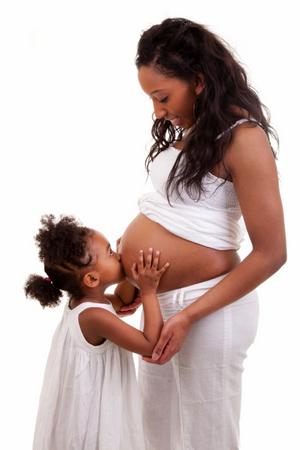
Even though a vaginal delivery after a cesarean is safe, there may be a small chance that the uterus could tear along the old incision during labour. Talk with your health care provider if you would like more information about a vaginal birth after a caesarean.
d. Getting Attached
You have probably begun to bond with your baby before his or her birth. The father is equally capable of bonding with his child. We must, therefore, give him this opportunity during the first minutes after birth.
Certain people feel this bond for their baby immediately after birth while others get attached progressively. The difference is similar to love at first site and falling in love.

Here are a few tips to help develop a strong bond between you and your baby.
e. When Something Goes Wrong with Your Baby
In most cases, babies are born healthy. However, even with all the medical progress, a baby may be born with an illness or abnormality. Very rarely, a baby may die after birth.
When something like this happens, the families are devastated. Many mothers feel guilty and blame themselves. Certain mothers fear that they have done something to cause the abnormality or death of their baby even though this is rarely the case.

Parents who have a baby born with an abnormality or severe illness suffer a deep bereavement. They are in mourning of the child with whom they had hoped to share a normal life.
The loss is even more intense when the baby dies. This loss is hard to accept and it leaves the parents feeling profound sadness, shock, disbelief and anger. Mourning is essential to healing. It is through mourning that parents eventually get over this terrible loss. They need all the support they can get. No matter what your feelings are, do not hesitate to share them. Ask for help and accept the help offered to get through this difficult time.
F. EARLY CARE FOR THE BABY
During the first few days after birth, your baby is adjusting to life outside your womb. Breathing, eating, and changes in temperature are all new. The hospital staff makes sure that all goes well for the baby.
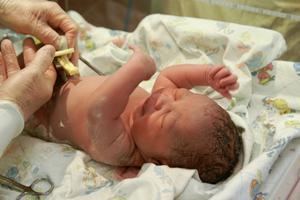
a. Immediate Care
Right after birth, your baby will be given an Apgar test. This test looks at the baby's heart rate, breathing, muscle tone, reflexes, and colour. A health care provider will give the baby a complete examination.
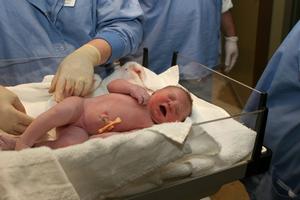
The law requires that ointment be put in your baby's eyes to protect against infection. This will be done soon after birth. This ointment can sometimes make your baby's eyes look puffy. Your baby will also be given an injection of vitamin K to prevent blood clots.
In most cases, your baby can remain skin-to-skin on your chest while these procedures are performed. Discuss these options with your health care provider.
b. Other Care
Childhood immunizations help prevent certain diseases. You will find more information about immunization in Module 8 entitled "Healthy Family".

In New Brunswick your baby will be pricked on the heel and a blood sample will be taken to be tested for rare disorders that can cause health problems in babies and children. If these conditions are detected early enough, damage to your baby's development can be prevented.
If you go home early or leave the hospital before 48 hours after childbirth, your baby will still need to be tested. Before leaving the hospital, make arrangements to have the baby's blood test done.
c. How Your Baby Looks
New parents are often surprised by the way their baby looks. During your pregnancy, you have been thinking and dreaming about your baby.
Love does not turn on and off but grows over time. As you spend time with your baby, touching, stroking, cuddling, feeding, and just looking at the tiny hands and feet, you will slowly and surely find a lot to love.
The following exercise will help you become familiar with your baby's appearance.
d. What Your Baby Needs
Newborn babies need to eat and to sleep. They need warmth and comfort. They need to be clean and safe. Babies learn about the world by having their needs met.
These first few days are a time when you, your baby, and your family get to know each other. The following exercise will help you discover your baby's needs and how to meet them. they are met.
You will have to learn new skills to take care of your baby. Some of these skills include: bathing, dressing, diapering, and feeding.
During your stay in the hospital the nurses are there to answer your questions and help you learn to care for your baby.
e. Registering Your Baby's Birth
Before leaving the hospital, you will be asked to fill in forms to register your baby's birth. You will also be given a form to complete in order to get a Social Insurance Number for your baby.
After completing these forms, you can return them to the maternity unit at the hospital. The baby's birth certificate and Medicare card will be mailed to you.
For questions about the birth certificates or Medicare numbers, you can receive more information by contacting your local Services New Brunswick Office or call 1-888-762-8600.
CONCLUSION
After months of waiting and maybe when you least expect it, your labour finally begins. When this happens, you will know that the time has come and that soon you will hold this baby that you wanted so much in your arms.
Like many women, you may feel surprised, nervous, or even a little anxious. All these feelings are normal.
Giving birth is a unique moment and not experienced the same way for everybody. The more you know about childbirth, the more confidence you will have and the more pleasant the experience will be for you and your partner.
When you finally hold your baby in your arms, you will know that it was all worth it.



